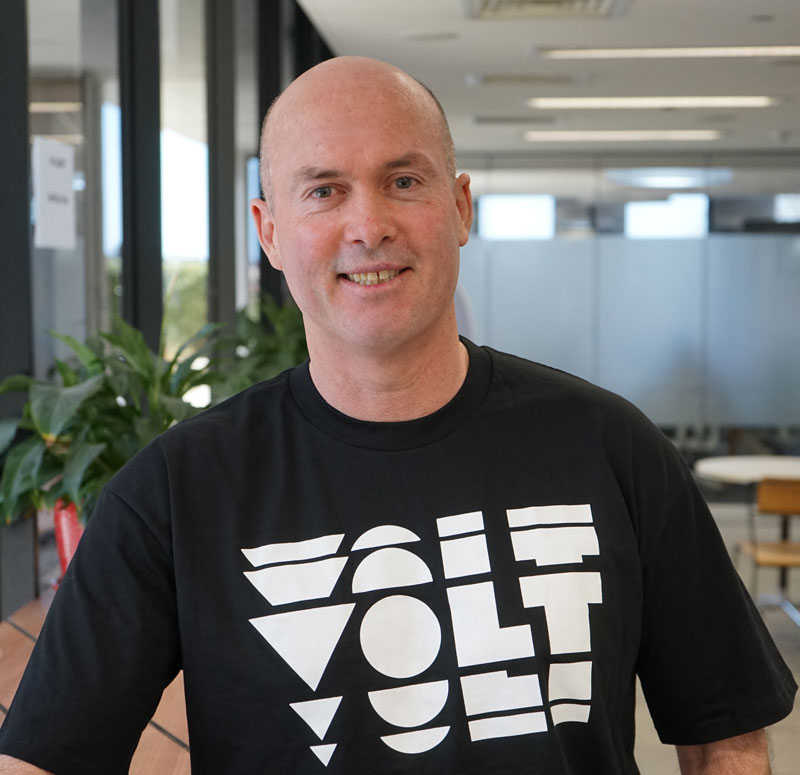Steve Weston, fresh back from 4 years with Barclays in the UK was listening to the May 2017 budget speech, and his world changed. The budget contained a plethora of banking reforms, including Open Banking, big bank levies, the BEAR (cultural reform) and the potential to allow new Fintech bank start-ups an on-ramp in terms of regulation and capital to foster innovation and competition in the banking sector.

The announcements opened the door on the potential to create a digital bank and platform business, akin to Starling Bank in the UK. Starling was founded in 2014 by industry-leading banker Anne Boden, who not only recognised how technology could transform the way people manage their money and serve customers in a way that traditional banks hadn’t, but also how a platform business can accelerate scale. They have since surpassed one million accounts, raised £263 million in backing and were voted Best British Bank two years running. Their customers also rate them Excellent on Trustpilot.

Throughout 2017 Steve developed the concept, built a team and by January 2019, Volt Bank was Australia’s first neobank to receive an unrestricted ADI licence. It has now begun on-boarding sections of its 40,000-strong waitlist and is announcing a ‘no catches’ ongoing base interest rate of 2.15 per cent on savings, ahead of a public launch planned for early 2020. Volt’s ‘no catches’ interest rate is not subject to an introductory period, or conditions that lead to many consumers not actually receiving a higher rate, like minimum monthly deposits or a minimum number of transactions.
Volt’s unique digital solution was designed to help consumers ‘save often’ and ‘spend wisely’ after CEO & Co-Founder, Steve Weston, noted a distinct absence of personal finance products that actually help to make Australian consumers better off.

“What I find troubling is banks saying they are putting customers at the heart of what they do but that isn’t reflected in actual practice. As an example, banks should say what percentage of their savings account customers get the higher advertised interest rates rather than the often very low base rates. The same applies to home loan interest rates. Why is it that new customers get a better deal than loyal customers?
“Banking needs to be done in a better way. Volt’s first product, our savings account, offers a highly competitive rate without any conditions. I challenge other banks to do the same.
“We are taking our time to build every product and feature in a prudent fashion, including by seeking feedback through our co-creation app, Volt Labs. When we launch to the public in 2020, Volt will be a viable, well-understood, and trusted option for everyday Australians,” concluded Mr. Weston.
So, what’s under the hood?
Well first there are no branches, but it has also been built digital first. and at the heart of the concept is the desire to truly assist customers reach the outcomes they’re seeking and is aiming to help shift behaviours. For example, the Volt app will also support savings discipline, helping to create a savings habit. This is decidedly NOT a product push.
Customers can onboard in less than 3 minutes and Volt will deliver a customer experience not provided by incumbent banks.
But Volt is also a platform, where providers of digital finance services can connect. Indeed, Volt already has an agreement with PayPal (after Citi, Barclays etc). Via their API they plan to offer best in class digital services on their platform.
They plan to grow via what Steve called Viral Advocacy and the 40,000 wait-list is part of that plan.
And Volt is a fully fledged ADI (in APRA speak) and so can offer deposit and savings accounts protected by the Government’s Financial Claims Scheme up to $250k, just like other Australian licenced banks.
They have a road map already laid out ahead, tackling other customer needs, and whilst initial funding for the venture has come mainly from high-net worth investors, they will be tapping a broader investor base to raise the capital they will need to commence lending quite soon.
So, I see this as more than just another upstart Fintech. Volt has the pedigree, the vision and the capability to become a significantly disruptive player in the Australian market. And frankly, as their Deposit rate is no holds barred higher than others in the field, it will be interesting to see how the incumbents respond. But this could just be the start of the long awaited and needed banking revolution here. Perhaps like Aussie Home Loans disrupted mortgage lending a generation ago?
Things could get very interesting indeed!
Note: DFA has no commercial relationship with Volt Bank. This article is one in our series on digital banking disruption – Fintech Spotlight.
